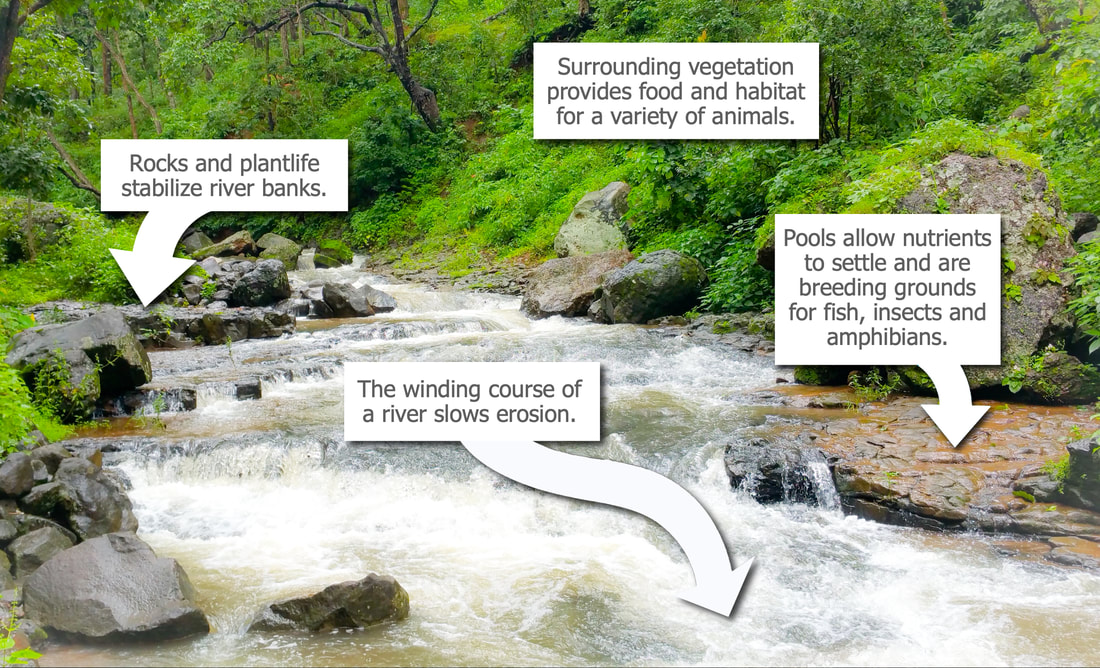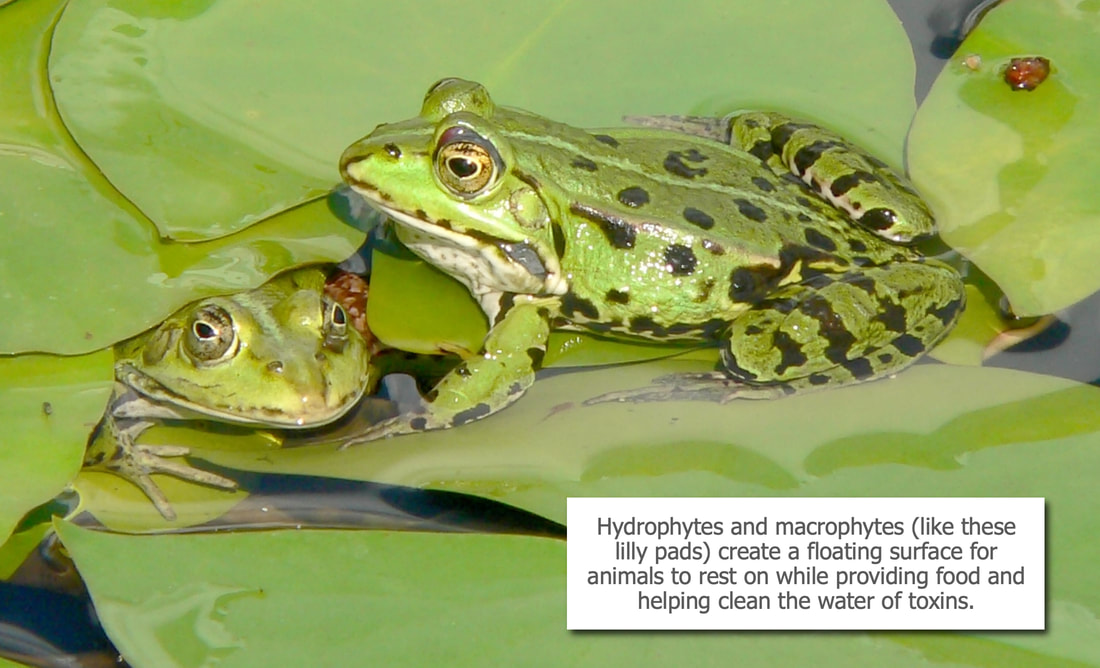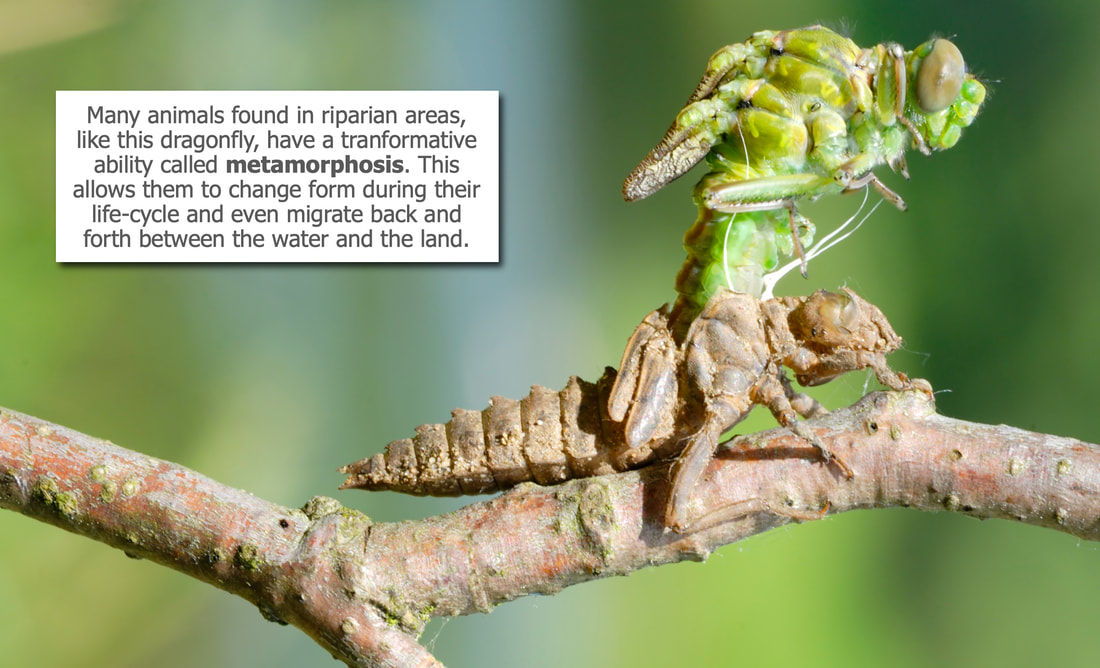ECOSYSTEMS > INLAND OREGON > RIPARIAN AREAS
Riparian areas are where bodies of fresh water meet the land, such as the banks along a creek or river. Plants and animals thrive in these areas, and not just because of the availability of fresh water. Here are three major — but often overlooked — ways riparian areas allow life to thrive.
Riparian areas are where bodies of fresh water meet the land, such as the banks along a creek or river. Plants and animals thrive in these areas, and not just because of the availability of fresh water. Here are three major — but often overlooked — ways riparian areas allow life to thrive.
1: They slow down the waterThe winding course of a river, combined with the riparian zone on either side, helps slow moving water even during floods. This reduces the effects of erosion and makes the water usable to a greater number of animals. Pools may form at the river’s edge where fish and amphibians lay their eggs; or where birds congregate during their annual migrations. Sediments and nutrients will settle in these calmer waters, replenishing the soil and encouraging plant growth.
|
2: They provide substitutes for soilMany riparian plants have unique adaptations so they can live either directly in the water or in a wet, soupy soil. These plants are called hydrophytes. If the plant emerges from the water, is completely submerged or floats on the water’s surface, than it’s called a macrophyte. A lily pad would be a good example of a macrophyte. Aquatic plants in riparian areas perform a similar function as kelp forests offshore — providing habitat and food for various animals, infusing the water with oxygen and removing toxins.
|
3: They promote transformationsIf you could sit and watch the life-cycle of an ordinary dragonfly, you’d see something amazing. A female will deposit her eggs on the underside of a leaf. When the nymphs (babies) hatch, they don’t look anything like the parent. Their bodies are short and compact with tiny, useless wings. They migrate to the tranquil pools at the river’s edge where they swim about in short, darting motions looking for food. It’s only toward the end of their life that the nymphs will take on the familiar dragonfly shape, attaching themselves to the stem of a plant and shedding their skin to reveal long wings and narrow bodies. Once air-borne, dragonflies will mate and the cycle will continue. This amazing transformative ability is called metamorphosis and is common to many insects and amphibians living in riparian areas. Such animals rely on all three aspects of a riparian area — water, air and land — in order to complete their life-cycle.
|







